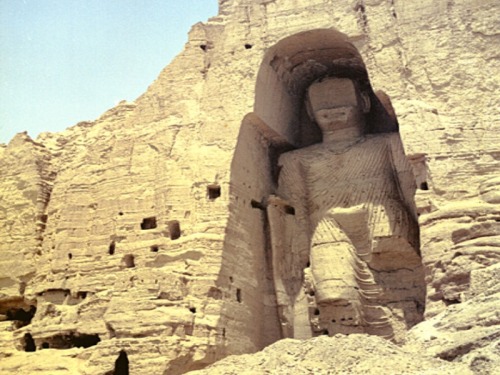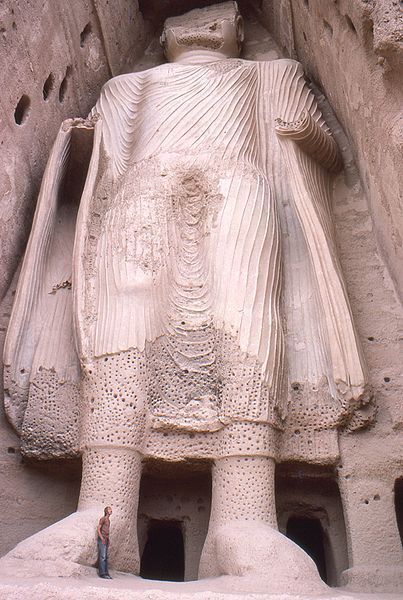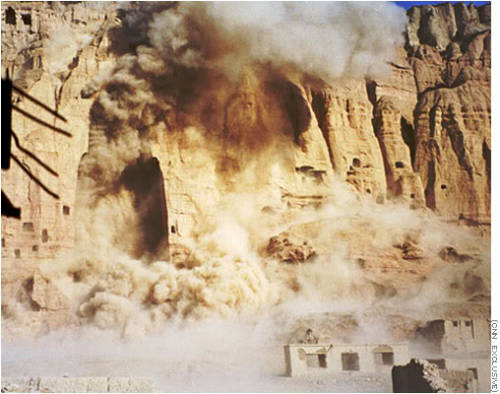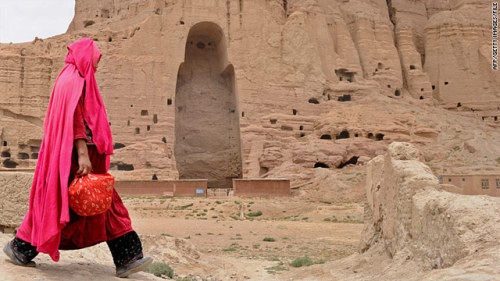The War on the Buddha’s“We should be proud of smashing idols, it has given praise to God that we hav
The War on the Buddha’s“We should be proud of smashing idols, it has given praise to God that we have destroyed them.” — Mullah Abdul Omar, Taliban LeaderIn ancient times Buddhism was a very common religion in Afghanistan, being brought by followers and missionaries from India. In Bamiyan province, located northwest of modern day Kabul, Buddhist monks founded a large monastery which became a center of learning and philosophy, as well as a rest stop for weary travelers on the Silk Road. The monks built temples and living quarters in the mountain caves, as well as inns and markets to service the many travelers heading to or from China. The most impressive feature of the Bamiyan monastery were two large statues of Buddha, carved directly from the sandstone rock, with the largest standing 180 feet (in comparison the Statue of Liberty is 150 feet). Buddhism disappeared from Afghanistan around the 7th century AD when the country was conquered by Muslims from the West. As a result of Afghanistan’s Buddhist past, Buddhist religious relics can be found scattered all over the country, including ancient and priceless statuary, frescoes, and carvings.In 1996 the country fell to the rule of the Taliban, a fundamentalist Muslim organization that quickly instituted strict religious law over the country, banning art, music, sports and entertainment. Religious clerics began issuing decree’s to cleanse Afghanistan of all non-Muslim relics, being seen as idols. In a fit of religious zealotry, precious ancient relics were smashed and destroyed by the thousands. Smashing Buddhist artifacts even became a pastime of Taliban soldiers, who would keep score of the number of Buddha statues they had destroyed.In 1997 Taliban commander Abdl Wahad declared his intentions to destroy the Bamiyan Buddha’s. Taliban leader Mullah Mohammed Omar ordered the statues to be preserved, declaring that they were not idols since they were no longer worshipped. He also planned to use the Buddha’s to raise some much needed tourist cash. However, the radical clerics of Afghanistan began to pressure the Taliban government, and in 2001 the statues were declared to be idols and scheduled for destruction. Muslim countries all over the world protested the decision and the Organization of the Islamic Conference declared that the destruction of the Buddha’s was un-Islamic and unprecedented. Regardless, the demolition would go on.Destruction began in March of 2001. At first the Taliban tried to destroy the statues with rocket propelled grenades, which did little but mar their sandstone features. Then they resorted to shelling them with anti-aircraft guns and artillery, but again the statues held firm against the onslaught. By mid march the Taliban began rigging the statues with TNT (dynamite). At this point foreign museums and historical organizations offered to buy and even move the statues, but the Taliban flat out refused the offer. The explosive were detonated, and the Bamiyan Buddha statues were reduced to rubble. After the Taliban was forced out of Afghanistan by NATO forces, the Bamiyan monastery has been declared an endangered world heritage site. Other archaeological and historical organizations have moved into Afghanistan to secure the country’s other important artifacts and relics. Today Bamiyan has become a major archeological site and historians continue to make new discoveries at the site. Among them is a 62 foot long reclining Buddha statue, new caves containing carvings and frescoes, and remnants of Buddhist religious texts. An effort is currently underway to attempt to rebuild the Bamiyan Buddha’s, headed by many Asian religious and historical organizations. -- source link
#history#religion#culture#afghanistan#buddha#buddhism#taliban#destruction#sad#ancient#relics



